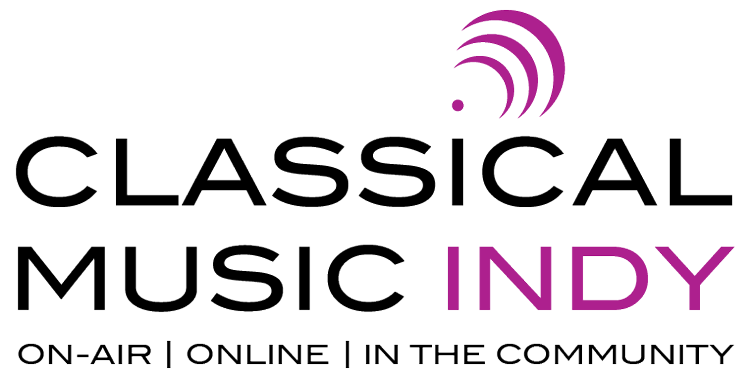Warmups & Improvisation Games for Jazz Ensembles
Words by Shawn Royer, PhD

When it comes to teaching jazz ensembles, warmups can be your best opportunity to teach basic, fundamental skills related to feeling a groove, ear training, music theory, and even improvisation. As an educator, I have worked with my own jazz ensembles (middle school, high school, and college level), and I work regularly with various levels of jazz ensembles as a visiting clinician at jazz festivals and schools. Here are some ideas that I have utilized that you may want to consider incorporating into your daily warmup routine.
Younger Groups
Working with younger jazz ensembles (middle school and younger high school groups) presents unique challenges, most notably that the students have not yet attained much technical facility on their instruments, and they often struggle to play in tune with each other. I have found the following warmups to contribute greatly towards the development of both technical facility and ear training.
Call & Response
Engage your students in call & response games by first playing simple rhythmic motifs on your instrument (demonstrating great tone, style, and articulations). Then, add one note at a time to turn your rhythmic ideas into melodic patterns. Eventually, as your students learn more notes, you can use this method (sound before sight) to teach students licks and scales.
I typically start with major pentatonic scales and patterns, then move on to minor pentatonic scales and patterns. For examples that you can emulate or share with your students as part of their daily warmup routine, check out my Call & Response Playlist on YouTube.
After you have gone through this process with your students, you can go around the room and have each student improvise a lick that the other students will echo back. The most important part of this game is to give the students parameters (“only use these 5 notes” and/or “only 4 beats long,” etc.). If the class can do the lick easily, go on to the next person. If they generally struggle, have the student model the lick again, and give the class another chance.
When I do call & response, I have the rhythm section play a groove and we play in time over the groove. This will help keep your students focused and engaged and will prevent unnecessary conversations and explanations.
Movin’ & Groovin’
This is an activity that I learned from the great jazz educator, Bethany Robinson. Every morning, she begins her jazz rehearsals by playing a familiar blues recording for the students. They all stand up and begin moving in time, shuffling their feet, nodding their heads, even singing along – whatever they need to do to feel and move in time to the groove. While some of the students may feel awkward at first, they will eventually become more comfortable with the activity and will undoubtedly get better at feeling and moving in time.
This activity makes a lot of sense because jazz is groove-based. Any music that is based in a groove actually triggers a response in our brains that tells us that we need to move. It is this embodied cognition in conjunction with socialization into musical cultures that makes us feel the need to move our bodies, tap our feet, and dance.
Additionally, there is only so much we can learn about jazz by reading words on a page. Just like learning a language, the ONLY way to really learn how to swing, how to articulate, and how to perform all of the “micro-timings” that make jazz groove is to LISTEN TO JAZZ. If it’s not already on their Spotify playlists, chances are that they may never purposefully listen to jazz if it’s not in your class!
Older Groups
I consider older groups to be your more advanced high school students and college students. These students likely already have a decent grasp of the chromatic scale and facility of at least the practical full-range on their instruments. These students have also been listening to jazz regularly and have begun developing their ears.
Scales & Patterns
At each rehearsal, I ask one student to pick a type of scale that they would like to learn. Then, I ask another student to pick a starting key. I then utilize a few different ways to teach them the scale in the first key (teach it by ear, write it on the board, discuss the theory behind it – whatever they need). Once they can play it, we repeat it a few times to really get it in our ears.
Then, we do the same thing moving around the cycle-of-fifths (or sometimes ascending in half-steps). I always work my way around the cycle in fourths (C – F – Bb – Eb, etc.) because that is how chords progress in music (C7 resolves to F, F7 resolves to Bb, etc.). Each scale should be played slowly at first and repeated if needed before going on to the next key.
After we’ve made it all the way around, then we do a “scale workout” where we play the scale around the cycle without repeating a key or stopping. I always participate in this activity with my students because it’s good to demonstrate the style and articulations, and I can use the practice as well!
I like to go through the same process with patterns. Sometimes I pick a pattern, and sometimes I have the students share a pattern that they have learned or that they made up. Learning patterns by ear and practicing them around the cycle without reading them contributes towards the development of ear training, technical facility, and the ability to improvise over chord changes.
Group Improv Games
There are lots of different improvisation games you can play with your students that give them a chance to improvise together in non-threatening “game-like” situations. Some ideas for this can be found in my other Classical Music Indy article, A Step-by-Step Method for Teaching Jazz Improvisation.
I like to build off of these steps by having students partner up and “trade fours,” meaning that student A will improvise a 4-measure phrase, then student B will improvise the next 4-measure phrase. The students trade back and forth, being mindful to keep their places in the chord changes. Sometimes the objective of the “game” is to imitate the other person, while other times it is to see how many times they can incorporate a certain lick or rhythmic motif.
Additional improv games include going around the room and “trading twos” or “trading fours” with the drummer. Typically, the goal of this “game” is to imitate or extend rhythmic motifs. Whether students are taking turns or all improvising at the same time, the objectives must always be clearly defined (landing on a specific chord tone whenever the chord changes, incorporating a specific rhythm, scale sound, pattern, use of space, etc.).

Dr. Shawn Royer is an Assistant Professor and Chair of the Music Department at Marian University in Indianapolis. She is also a Yamaha Performing Artist and Vandoren Artist Clinician on clarinet & saxophone.






Leave a Reply